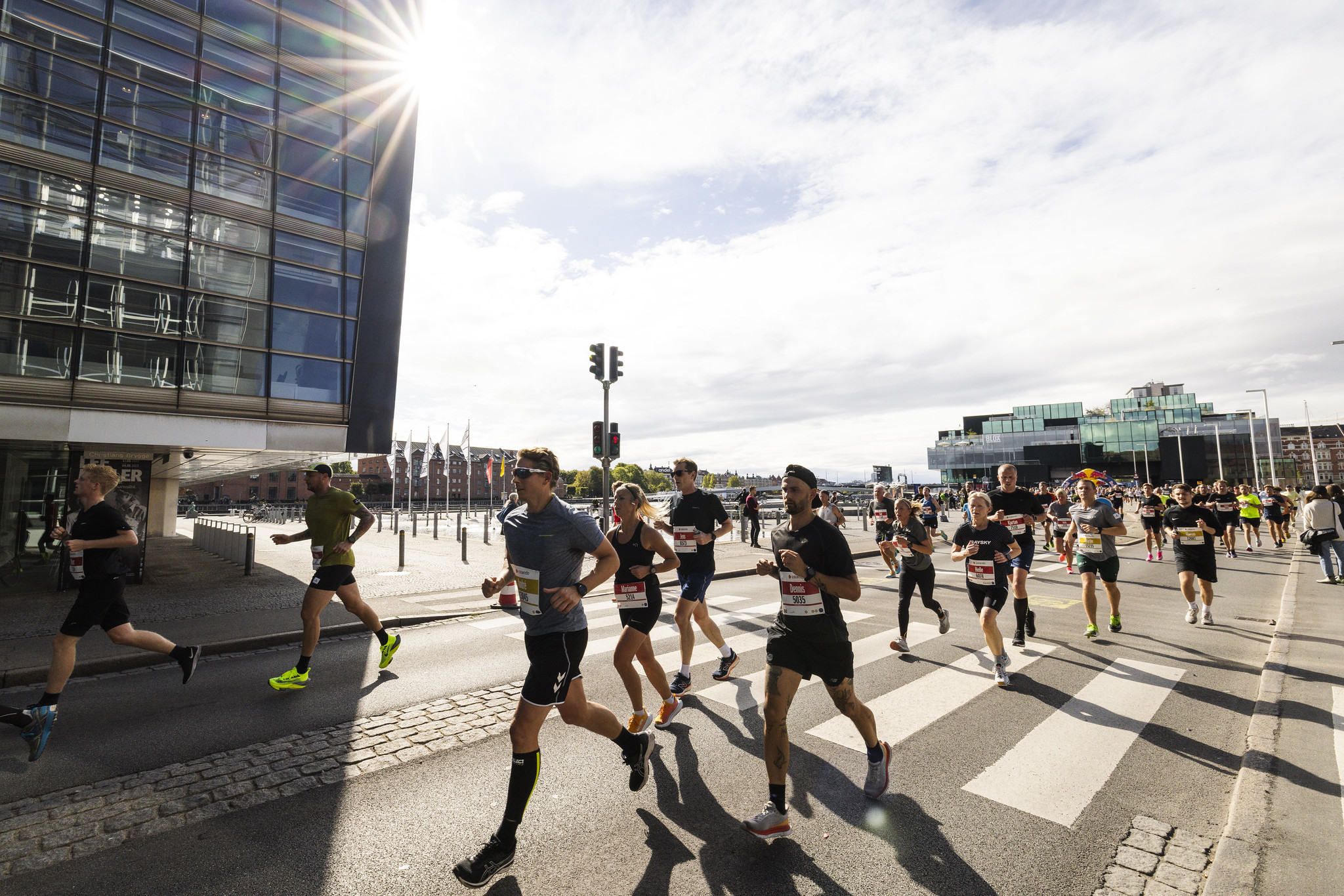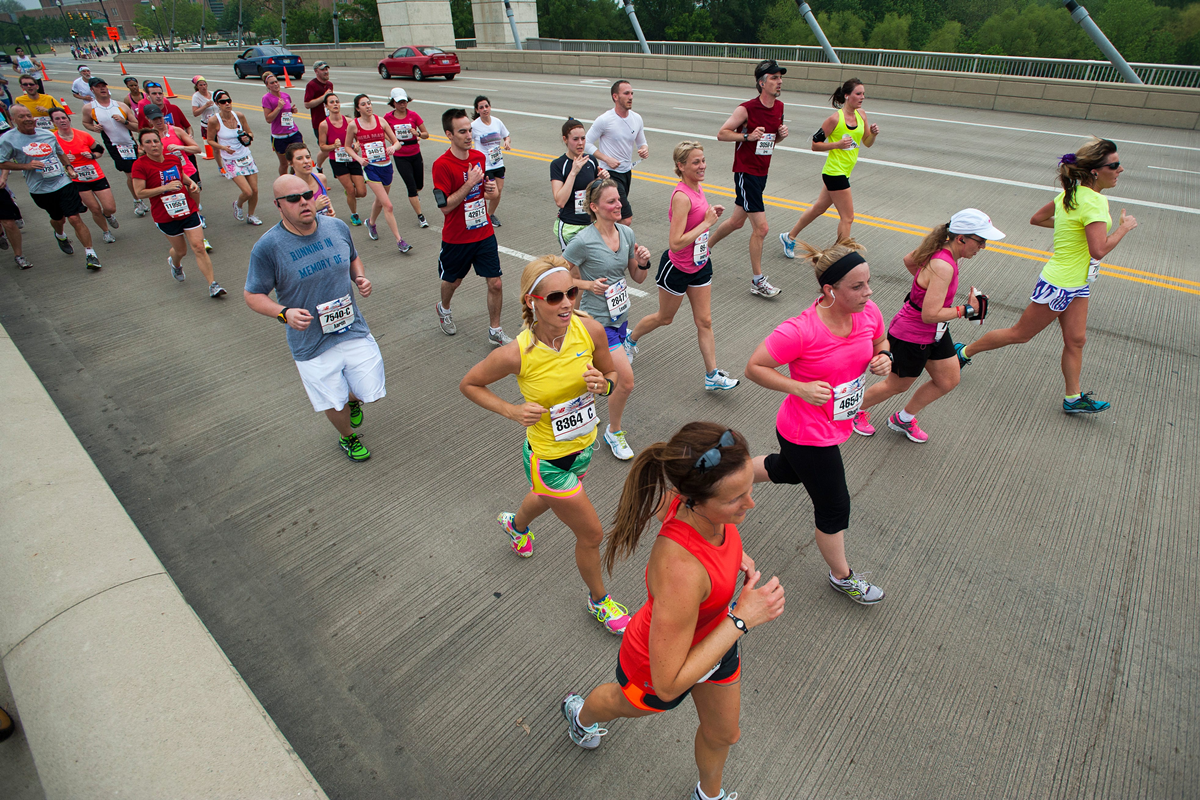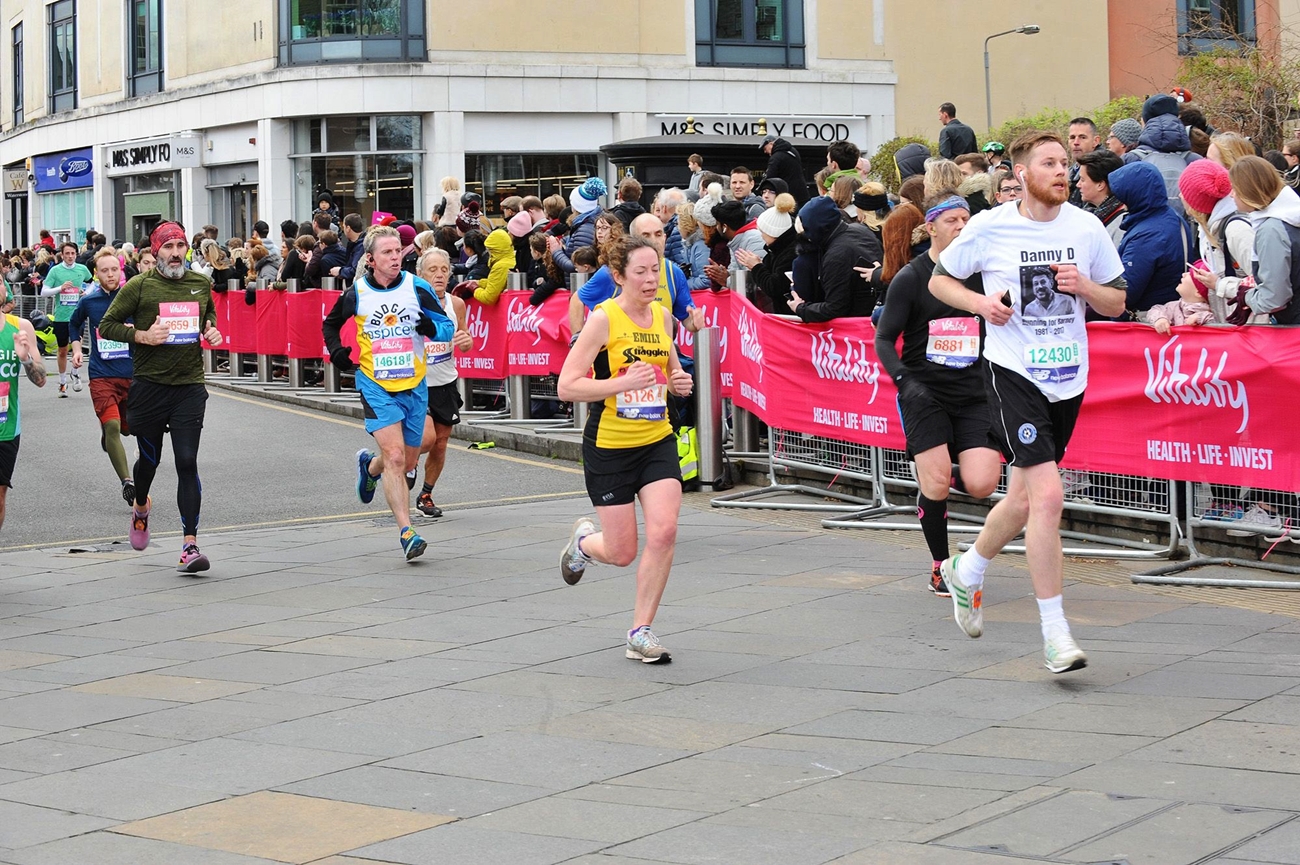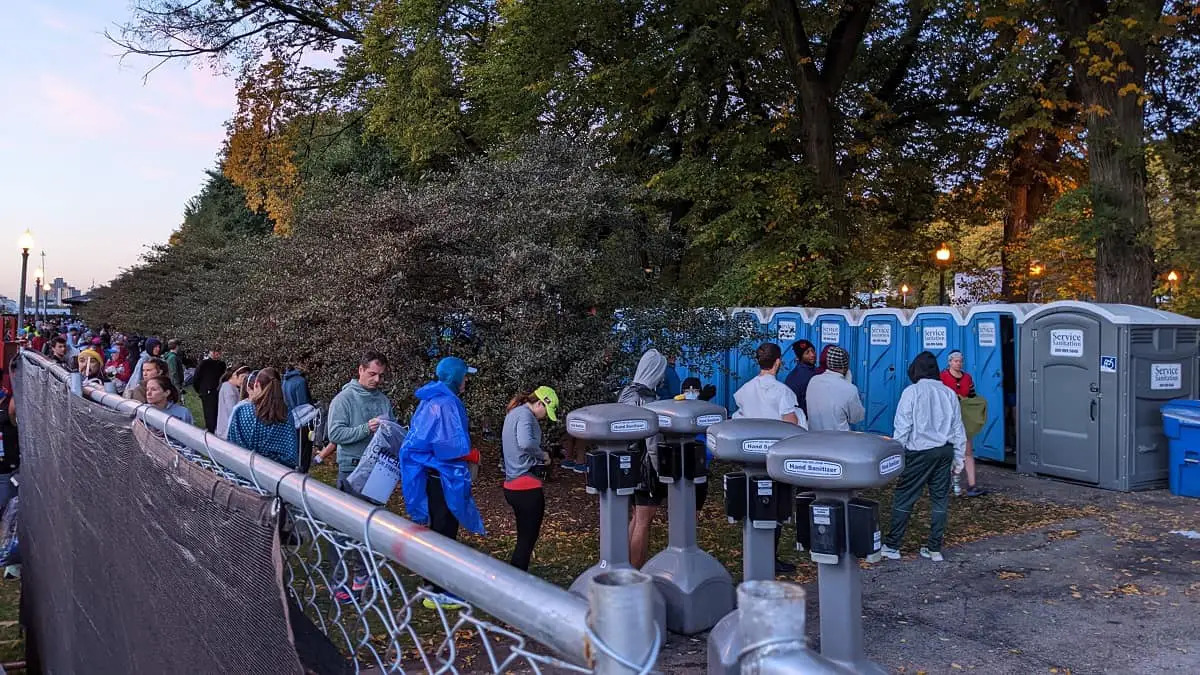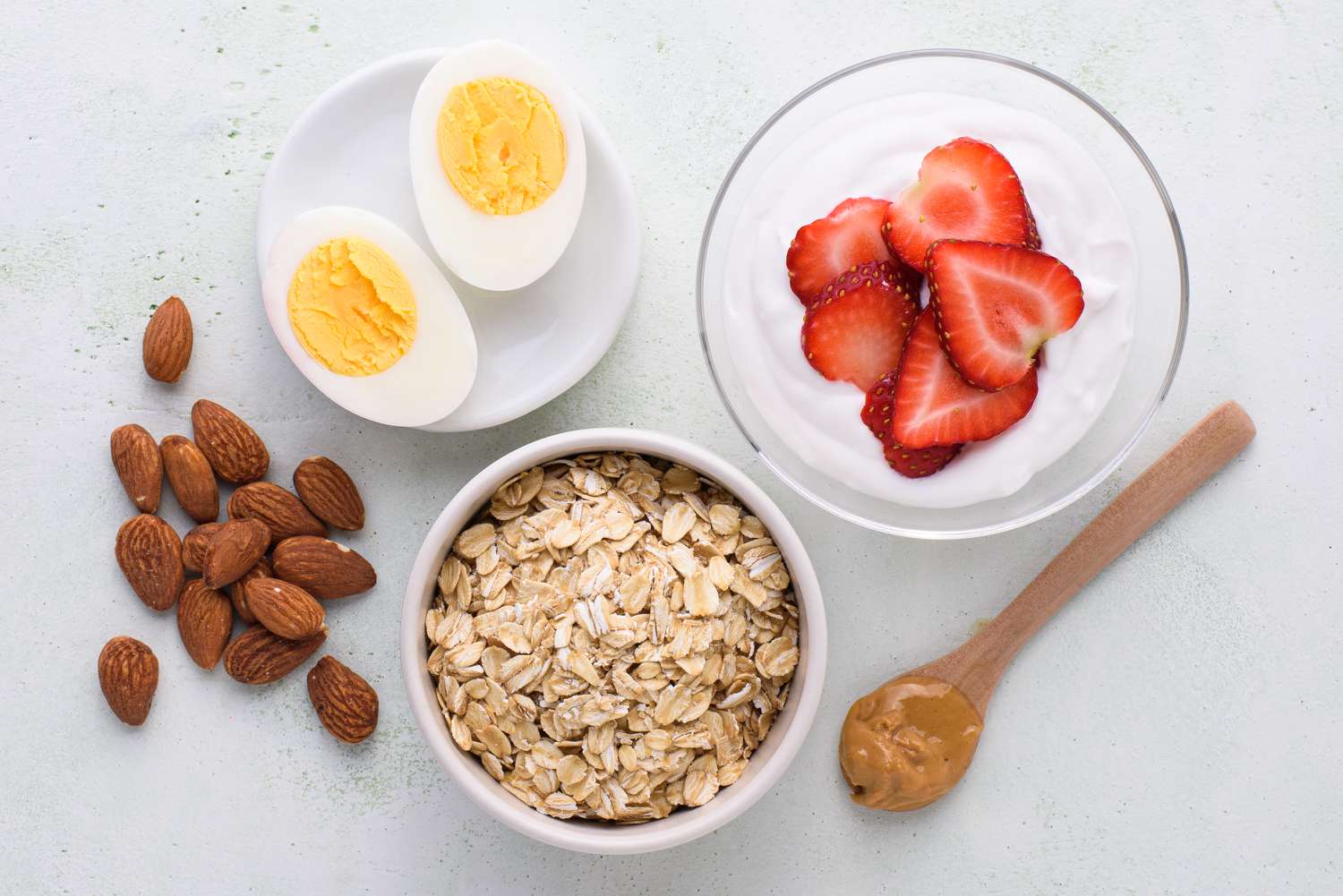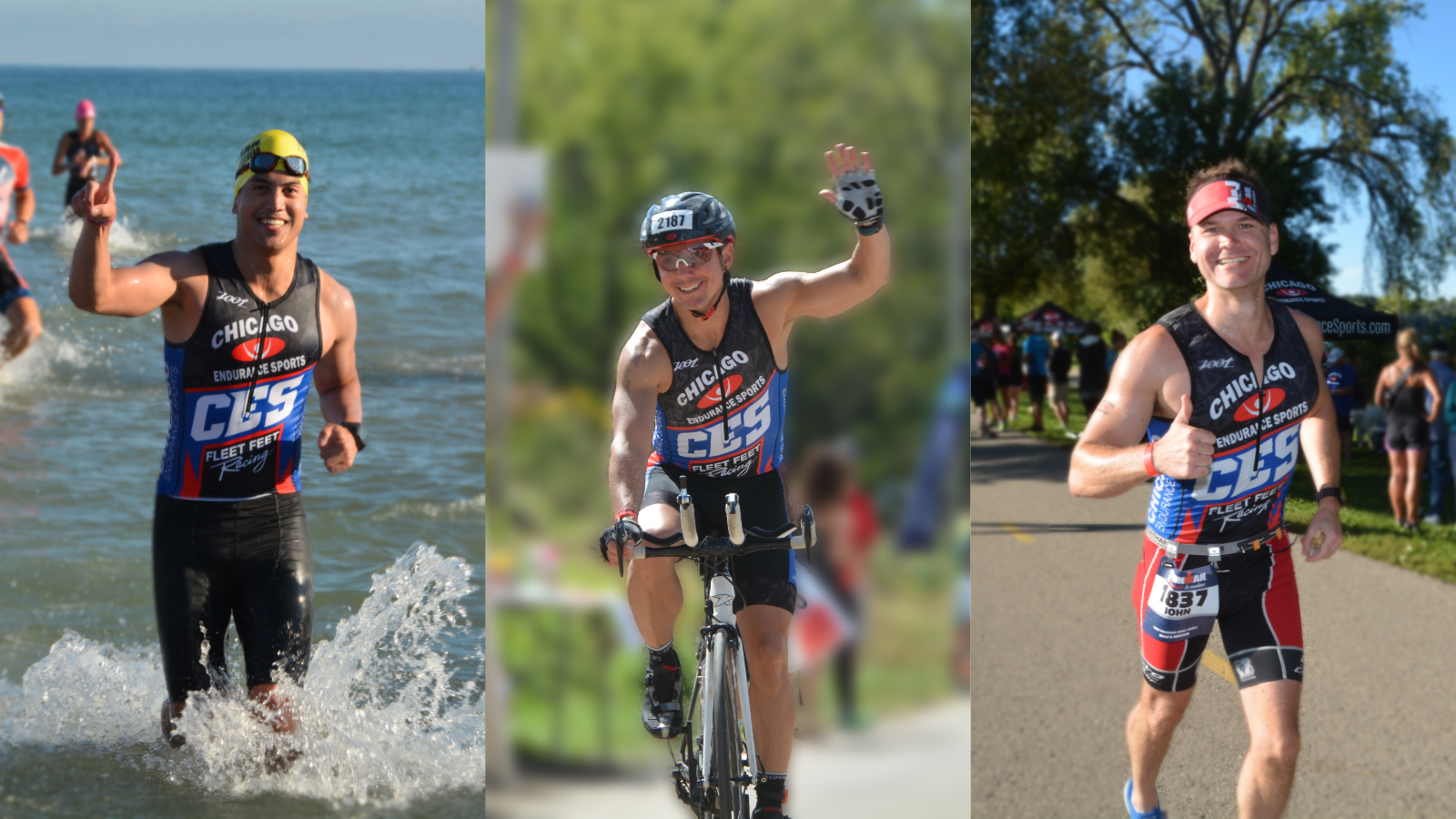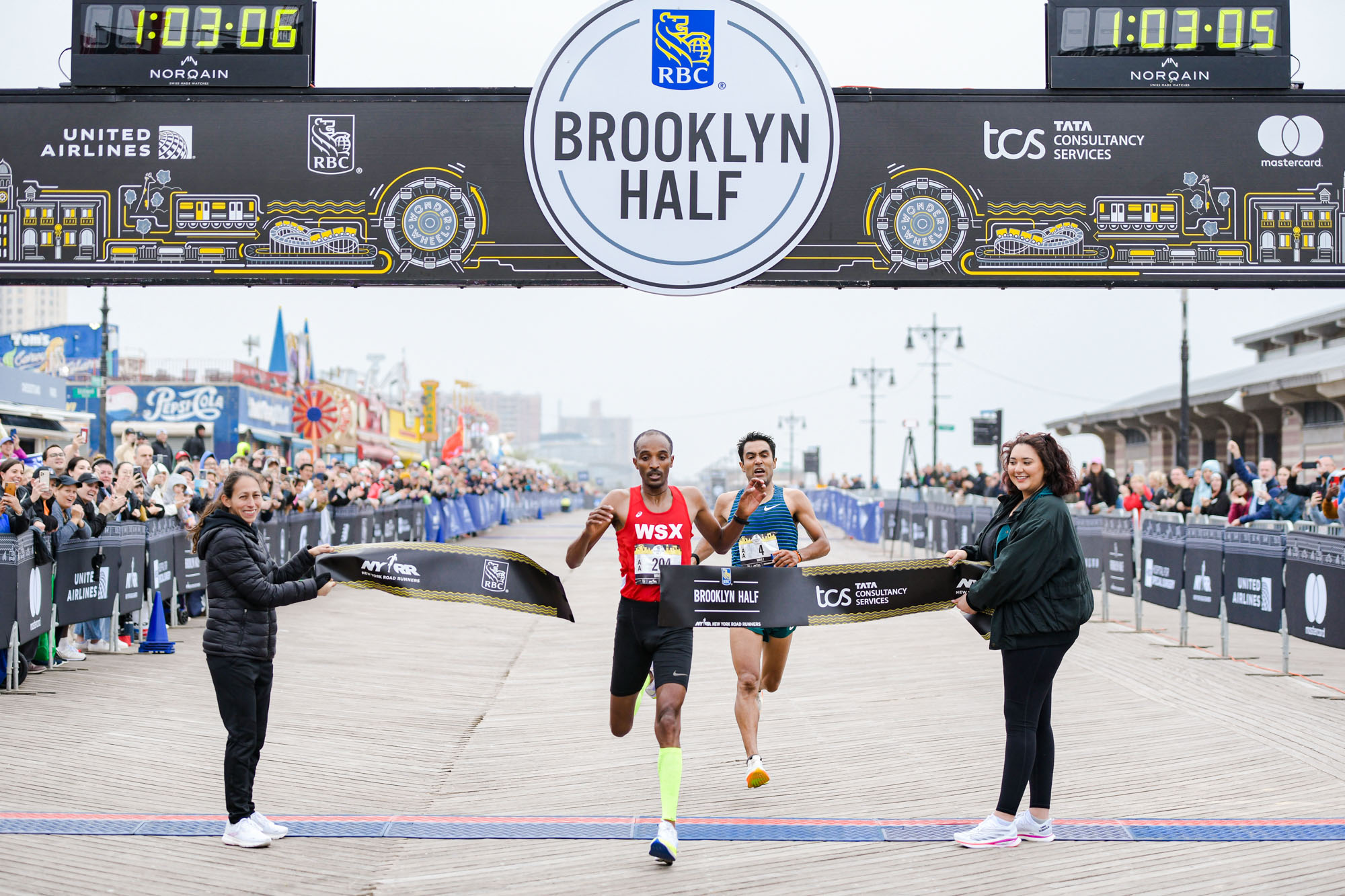Home>Misc>Featured>How Do I Avoid Having To Use The Bathroom During A Half Marathon
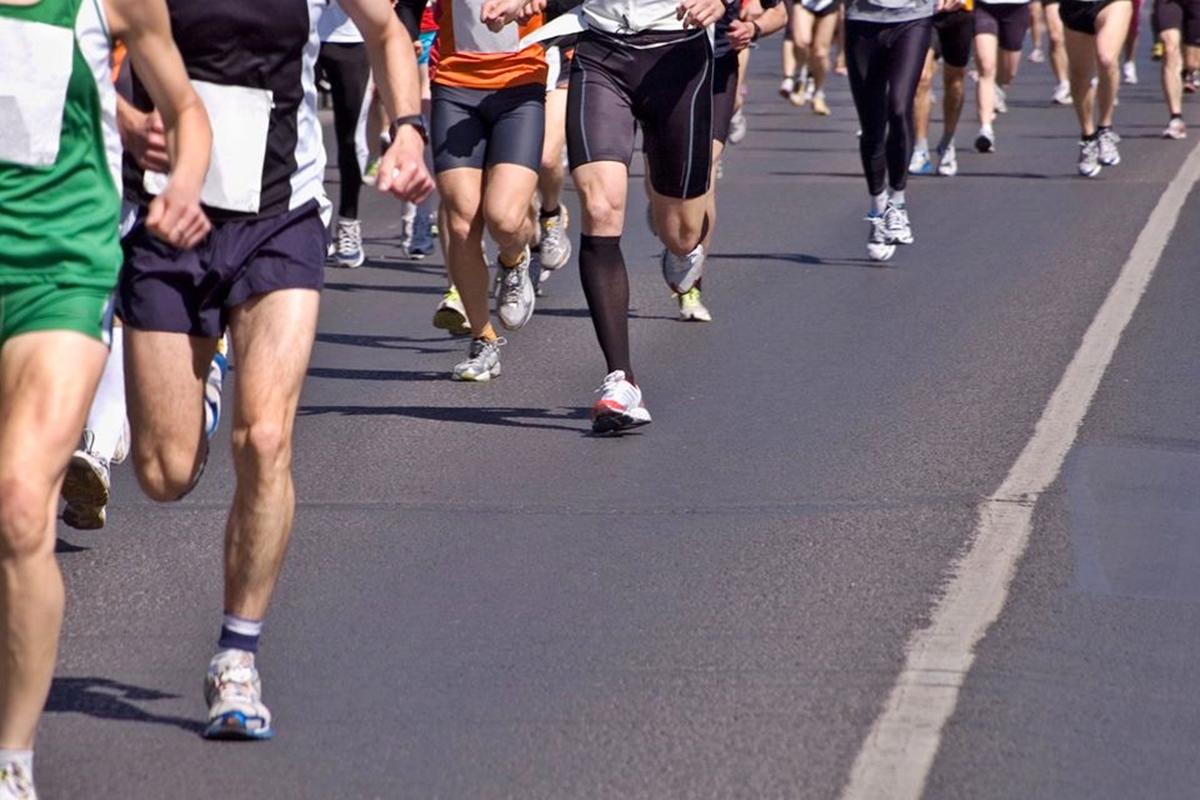

Featured
How Do I Avoid Having To Use The Bathroom During A Half Marathon
Modified: January 2, 2024
Discover expert tips on how to stay bathroom-free during a half marathon. Find out how to avoid those inconvenient pit stops and stay focused on your race! Featured article.
Introduction
Participating in a half marathon is an exciting and challenging endeavor that requires the right combination of physical fitness, mental stamina, and strategic planning. While most runners focus on their training regimen, diet, and hydration, one aspect that is often overlooked is how to handle the need to use the bathroom during the race. It’s a topic that may seem trivial compared to other race day considerations, but the reality is that it can greatly impact your performance and overall experience.
Whether you’re a seasoned runner or a first-timer, the urge to use the bathroom can be a major discomfort during a half marathon. Having to make an unplanned pit stop can disrupt your rhythm, waste precious time, and even affect your mental focus. However, with some careful planning and a few expert strategies, you can avoid the inconvenience and potential embarrassment of urgently needing to use the bathroom during your race.
In this article, we will explore various tactics and tips to help you minimize the need for bathroom breaks during a half marathon. From pre-race preparation to on-course strategies, we’ll cover everything you need to know to handle this uncomfortable situation and ensure a smooth and uninterrupted race experience.
Importance of Planning Bathroom Breaks
Planning bathroom breaks may not be the most glamorous aspect of training for a half marathon, but it is undoubtedly one of the most crucial factors for a successful race. Ignoring the need to address this aspect can lead to uncomfortable situations, loss of time, and negatively impact your overall performance.
One of the main reasons to plan bathroom breaks is to maintain your comfort and avoid unnecessary discomfort during the race. The urge to use the bathroom can be distracting and can affect your focus on running efficiently. By taking proactive steps to minimize this urge, you can stay fully focused on the race and achieve your personal goals.
Another important reason to plan your bathroom breaks is to avoid losing precious time. Randomly stopping at any available bathroom along the course can result in a significant time loss, which can be detrimental if you are aiming for a personal best or trying to achieve a specific race time goal. Strategically planning and timing your bathroom breaks will help you minimize the time spent off the course and maximize your overall performance.
Additionally, by planning your bathroom breaks, you can take advantage of the available facilities on the course. Many races have designated porta-potties along the route, and knowing when and where they are located can save you time and effort during your race. By planning ahead, you can ensure that you won’t have to waste valuable energy to search for a bathroom or wait in long lines.
Furthermore, planning your bathroom breaks helps you avoid the need for sudden stops or rushing to find a suitable place. Being “caught off guard” can lead to uncomfortable situations and can even disrupt your race flow. By planning ahead and anticipating your bathroom needs, you can minimize these anxiety-inducing moments and focus solely on your running.
In summary, planning bathroom breaks for a half marathon is a crucial aspect of your race preparation. By addressing this often-overlooked factor, you can maintain your comfort, avoid time loss, take advantage of available facilities, and reduce the chances of unexpected and uncomfortable situations during the race. In the next section, we will discuss how hydration and bathroom breaks are interconnected and offer strategies to help you manage both effectively.
Hydration and Bathroom Breaks
Hydration is a critical aspect of any race, including a half marathon. Proper hydration not only helps maintain your overall performance but also affects the need for bathroom breaks. Understanding the relationship between hydration and bathroom breaks is essential for managing both effectively during your race.
During a half marathon, it’s important to strike a balance between staying hydrated and not overdoing it. Over-hydrating can lead to excessive fluid intake, which can increase your need to use the bathroom frequently. On the other hand, under-hydrating can result in dehydration, which can cause various health issues and negatively impact your performance.
To optimize your hydration strategy and minimize bathroom breaks, consider the following tips:
- Before the race, ensure you are adequately hydrated by drinking enough fluids in the days leading up to the event. This will help you start the race with a good level of hydration.
- During the race, sip on fluids at regular intervals rather than guzzling down large amounts all at once. This helps your body absorb the fluids more efficiently and reduces the likelihood of urgent bathroom needs.
- Pay attention to your body’s signals. Drink when you are thirsty, but don’t force excessive fluid intake. Trust your body’s natural cues to maintain proper hydration levels.
- Consider the weather conditions. Hot and humid conditions may require increased fluid intake, while cooler weather may necessitate fewer fluids. Adjust your hydration strategy accordingly.
It’s also worth noting that not all fluids affect bathroom needs equally. Caffeinated beverages, such as coffee or energy drinks, can act as diuretics and increase urine production, potentially leading to more frequent bathroom breaks. If you’re sensitive to caffeine, it might be advisable to limit or avoid these drinks before and during the race.
In addition to proper hydration, timing your fluid intake is another key factor in managing bathroom breaks. Aim to drink fluids well in advance of the race start to allow your body enough time to process and eliminate excess fluids before you begin running. This can help reduce the need for immediate bathroom breaks at the start of the race.
Remember that everyone’s hydration needs and bladder capacities are different. It may take some trial and error during training runs to determine what works best for you. By being mindful of your hydration levels, fluid intake timing, and the type of fluids you consume, you can minimize the need for bathroom breaks and optimize your performance during your half marathon.
Pre-Race Preparation
Proper pre-race preparation is crucial to minimize the need for bathroom breaks during a half marathon. By setting yourself up for success before the race, you can reduce the chances of any unexpected bathroom emergencies and ensure a smoother race experience.
Here are some pre-race preparation tips to help you manage bathroom needs:
- Plan your meals: Be mindful of your food choices in the days leading up to the race. Avoid foods that are known to cause gastrointestinal distress or increase the likelihood of needing a bathroom break. Stick to easily digestible foods such as lean proteins, whole grains, fruits, and vegetables.
- Monitor your fiber intake: While fiber is an essential part of a healthy diet, excessive intake can lead to increased bowel movements and the need for frequent bathroom breaks. Opt for a moderate fiber intake in the days leading up to the race to avoid any digestive discomfort.
- Avoid excessive caffeine and alcohol: Both caffeine and alcohol can have diuretic effects, leading to increased urine production. Limit your consumption of these substances before the race to minimize the need for frequent bathroom breaks.
- Visit the bathroom before the race: Make it a habit to use the bathroom right before the race starts, even if you don’t feel the immediate urge. This will help empty your bladder and reduce the likelihood of needing a bathroom break during the race.
- Consider timing your morning routine: If you typically have a regular exercise routine or morning bathroom habits, try to adjust your schedule accordingly on race day. By allowing sufficient time in the morning for your body to naturally go through its routine, you can minimize the need to interrupt your race with an unplanned bathroom break.
It’s also important to familiarize yourself with the racecourse and know the location of the porta-potties along the route. Study the race map provided beforehand and make a mental note of the porta-potty locations. This knowledge will come in handy when planning your bathroom breaks and can save you time and effort during the race.
Finally, ensure that you pack any necessary bathroom essentials in your race day bag. This may include toilet paper, hand sanitizer, and even a small pack of wet wipes. Having these items readily available can help you manage any unexpected bathroom situations more comfortably and hygienically.
By taking the time to prepare your body and mind for the race and being proactive about addressing your bathroom needs, you can set yourself up for a more enjoyable and uninterrupted experience during your half marathon.
Timing Your Bathroom Breaks
Timing your bathroom breaks strategically is crucial for maintaining a smooth race pace and minimizing the impact on your overall performance during a half marathon. By planning when to take bathroom breaks, you can minimize time loss and ensure a more efficient and enjoyable race experience.
Here are some tips for timing your bathroom breaks during a half marathon:
- Understand your body’s signals: Pay attention to your body’s cues and become familiar with the signs that indicate you may need to use the bathroom soon. These signals may include a slight discomfort in your bladder, an increased urge to urinate, or abdominal cramping. By recognizing these signs early on, you can plan your breaks accordingly and avoid any discomfort or disruptions during the race.
- Take advantage of aid stations: Most organized races will have aid stations along the course that provide water, sports drinks, and sometimes even food. These aid stations are also likely to have porta-potties available for runners to use. Instead of making a random pit stop, plan your bathroom breaks around these aid stations. This allows you to utilize the facilities conveniently without deviating too far off the race route.
- Consider bathroom breaks during slower sections: Pay attention to the course layout and identify sections that are less challenging or provide some relief, such as downhill stretches or straightaways with fewer curves. These segments can be ideal moments to take a quick bathroom break without losing much time or disrupting your running momentum.
- Avoid peak times: Be mindful of the race congestion and the likelihood of long lines at porta-potties during peak times of the race. Consider taking your bathroom breaks earlier or later in the race when there might be fewer runners in line, allowing you to minimize waiting time and get back on the course swiftly.
- Find a balance between urgency and efficiency: While it’s important to address your bathroom needs promptly, be mindful of not spending excessive time in the porta-potty. Go in, take care of business efficiently, and get back on the course. Be considerate of other runners who may be waiting and maintain race etiquette.
Remember, every runner’s needs and preferences are different. It may take some trial and error to find the optimal timing and frequency of your bathroom breaks. Use your training runs as an opportunity to experiment with different strategies and identify what works best for you.
By timing your bathroom breaks strategically, you can maintain a steady race pace, minimize time loss, and avoid unnecessary disruptions during your half marathon.
Food and Drink Considerations
Proper nutrition and hydration play a vital role in preparing for a half marathon, and they also have an impact on your bathroom needs during the race. Making wise food and drink choices can help you minimize the risk of digestive issues and reduce the need for frequent bathroom breaks.
Here are some important food and drink considerations to keep in mind:
- Meal timing: Plan your pre-race meals wisely to avoid any potential stomach discomfort or the need for immediate bathroom breaks. Aim to eat a well-balanced meal consisting of carbohydrates, lean proteins, and healthy fats about 2-3 hours before the race start. This allows adequate time for digestion and reduces the chances of gastrointestinal issues during the race.
- Avoid high-fiber foods: While fiber is a crucial part of a healthy diet, consuming excessive amounts of high-fiber foods before the race can lead to increased bowel movements and the need for frequent bathroom breaks. Opt for low-fiber, easily digestible foods in the immediate hours before the race to minimize the risk of gastrointestinal distress.
- Consider your personal tolerance: Every runner’s body reacts differently to different types of foods and drinks. Pay attention to how your body responds to specific foods and beverages during your training runs, and adjust your race day nutrition accordingly. Avoid foods and drinks that you know cause discomfort or increase the likelihood of needing a bathroom break.
- Fluid intake: Hydration is crucial, but excessive fluid intake can also lead to the need for frequent bathroom breaks. Drink fluids at regular intervals leading up to the race to maintain proper hydration levels, but be mindful of consuming excessive amounts immediately before the race. Sip on fluids gradually throughout the race rather than guzzling them down all at once.
- Electrolyte balance: Maintaining electrolyte balance is important for optimal performance and fluid absorption. Consider consuming sports drinks or electrolyte-enhanced fluids during the race to replenish electrolytes lost through sweat. However, be cautious of consuming too much, as excessive intake can upset your stomach and increase the need for bathroom breaks.
It’s important to note that each individual may have different tolerances and preferences when it comes to race day nutrition. It’s recommended to practice your nutrition and hydration strategies during your training runs to determine what works best for you. Finding the right balance of foods and drinks will help you maintain energy levels, minimize bathroom breaks, and enhance your overall race performance.
Training Strategies to Minimize Bathroom Needs
When preparing for a half marathon, incorporating training strategies to minimize the need for bathroom breaks can significantly enhance your race day performance. By implementing certain techniques during your training runs, you can condition your body to better manage its bathroom needs and reduce the chances of any inconvenient interruptions on race day.
Here are some training strategies to consider:
- Establish a routine: Try to establish a regular bathroom routine before your training runs. This can help train your body to empty its bladder before heading out for a run, reducing the likelihood of needing a bathroom break mid-run. Over time, your body will start to adapt to this routine, making it easier to manage your bathroom needs during the actual race.
- Experiment with nutrition: Use your longer training runs as an opportunity to experiment with different nutrition strategies and identify foods and drinks that best suit your digestive system. Pay attention to how your body responds to specific foods and beverages during these runs, and make adjustments to your race day nutrition plan accordingly to minimize any potential bathroom issues.
- Train your bladder: Just as you train your muscles for running, you can also train your bladder to hold urine for longer periods. During your training runs, gradually increase the distance between bathroom breaks. Start by extending the time between breaks by a few minutes initially and gradually work your way up. This can help increase your bladder capacity and reduce the need for frequent bathroom stops during the race.
- Simulate race day conditions: Incorporate runs that mimic race day conditions as closely as possible. This includes drinking fluids at similar intervals and quantities to what you plan to do on race day. By training your body to get accustomed to your race day hydration strategy, you can gauge its impact on your bathroom needs and make any necessary adjustments ahead of time.
- Practice pacing strategies: In addition to physical training, practicing pacing strategies can also help minimize bathroom needs. By maintaining a consistent and controlled pace throughout your training runs, you can reduce the chances of gastrointestinal disturbances that may trigger the need for a bathroom break. Experiment with different pacing methods and find what works best for you.
It’s important to note that individual responses may vary, and what works for one person may not work for another. Pay attention to your body’s signals and adjust your training strategies accordingly. By consistently implementing these training techniques, you can condition your body to better manage its bathroom needs and set yourself up for a successful and uninterrupted race day experience.
Using Porta-Potties on the Course
During a half marathon, it’s not uncommon for runners to need to use the bathroom at some point along the course. Most organized races provide porta-potties at designated spots to accommodate the needs of the participants. Knowing how to effectively use these facilities can help minimize time loss and ensure a smooth race experience.
Here are some tips for utilizing porta-potties on the course:
- Plan ahead: Familiarize yourself with the racecourse map and porta-potty locations. Take note of the approximate mile markers where the facilities are situated so that you can plan your bathroom breaks accordingly.
- Be observant: Keep an eye out for signs indicating the presence of porta-potties along the course. Often, races will have these portable restrooms grouped together for convenience. Look for signs, banners, or race volunteers pointing out the exact locations.
- Don’t wait until it’s urgent: If you feel the need to use the bathroom, don’t delay until it becomes an urgent situation. Plan your breaks strategically, taking advantage of the available facilities before the urge becomes overwhelming.
- Manage queues: During peak race times, porta-potties can have long lines. To minimize waiting time, try to time your bathroom breaks when the lines are shorter. This may be at the start of the race, during less crowded sections, or after a water station when many runners stop to hydrate.
- Be efficient: Once inside the porta-potty, be mindful of time. Take care of your business promptly and efficiently, respecting the needs of other runners who may be waiting. Remember to clean up after yourself by properly disposing of any used toilet paper or wipes.
- Stay focused: As you enter and exit the porta-potty, maintain your focus and concentration. Watch your step and be cautious of any wet or slippery surfaces. This will help prevent accidents or injuries during the race.
While porta-potties are a convenient option, it’s important to note that they may not always be available or easily accessible. In some cases, it may be necessary to make use of other restroom facilities along the race route, such as public restrooms or facilities at nearby establishments. Be prepared to make adjustments and adapt your bathroom plans accordingly.
Remember, the use of porta-potties during a race is a shared experience among the participants. Show respect for others by being considerate, efficient, and mindful of the needs of fellow runners. By following these tips, you can effectively utilize the available porta-potties and ensure minimal time loss during your half marathon.
Tips for Holding in the Urge
During a half marathon, there may be instances when you feel the urge to use the bathroom but prefer to continue running without taking a break. While it’s important to listen to your body and address its needs, there are times when holding in the urge can help you maintain your race pace and avoid unnecessary interruptions. Here are some tips for holding in the urge:
- Stay distracted: Keep your mind occupied and focused on the race. Engage in positive self-talk, focus on your breathing, or distract yourself with music or podcasts. By diverting your attention away from the urge, you may find it easier to hold it in and continue running.
- Use mental techniques: Utilize mental techniques such as visualization or counting to divert your focus away from the urge. Visualize yourself crossing the finish line or reaching a specific mile marker, and use that as motivation to push through the discomfort.
- Control your breathing: Practice deep breathing techniques to help relax your body and distract from the urge. Take slow, deep breaths in through your nose and exhale slowly through your mouth. This can help calm your body and reduce the pressure on your bladder.
- Adjust your running form: Making slight adjustments to your running form can help alleviate the pressure on your bladder. Try engaging your core muscles and maintaining an upright posture. This can help distribute the pressure more evenly throughout your body instead of focusing it on your bladder.
- Change your pace: Sometimes, altering your pace can provide temporary relief. Experiment with picking up the pace slightly or slowing down to find a rhythm that eases the urge. However, be cautious not to disrupt your overall race strategy or strain yourself excessively.
- Practice in training: Use your training runs as an opportunity to practice holding in the urge. Gradually increase the distance between bathroom breaks during your long runs, conditioning your body to endure longer periods of discomfort. This will help build your mental and physical strength for race day.
- Stay hydrated: Although it may seem counterintuitive, maintaining proper hydration can actually help control the urge to use the bathroom. Dehydration can lead to more concentrated urine, which can irritate your bladder and increase the urgency to urinate. Ensure you drink fluids at regular intervals to maintain optimal hydration levels.
- Know your limits: While it’s essential to push through discomfort during a race, it’s equally important to prioritize your health and well-being. If the urge becomes unbearable or you experience significant discomfort, it may be necessary to reassess and find a suitable place for a quick bathroom break.
It’s important to note that holding in the urge to use the bathroom is a personal decision and should not compromise your well-being or overall race experience. Listen to your body and make the best decision for yourself based on your comfort and health.
By implementing these tips and practicing your ability to hold in the urge during your training runs, you can develop the mental and physical strength to push through discomfort and maintain your race pace during a half marathon.
Conclusion
Managing bathroom needs during a half marathon is an essential aspect of race preparation and execution. By incorporating strategic planning, training strategies, and implementing tips to minimize bathroom breaks, you can optimize your performance and ensure a smooth race experience.
From the importance of planning bathroom breaks and considering hydration factors to pre-race preparation and timing your bathroom breaks, each element plays a vital role in minimizing interruptions and discomfort. Additionally, being mindful of food and drink choices, using porta-potties strategically, and employing techniques to hold in the urge can significantly impact your race performance.
Remember, every runner is unique, and it may require some trial and error to find the strategies that work best for you. Use your training runs to practice and refine your approach, adapting as necessary to fine-tune your bathroom management during the half marathon.
By taking the time to plan ahead, understand your body’s signals, and make informed choices about nutrition, hydration, and bathroom breaks, you can enhance your race experience. With the right preparation and execution, you can focus on achieving your race goals without unnecessary interruptions or discomfort along the way.
So, lace up your running shoes, implement these strategies, and tackle your next half marathon confident in your ability to handle your bathroom needs effectively, allowing you to fully concentrate on the joy and accomplishment of crossing that finish line!

